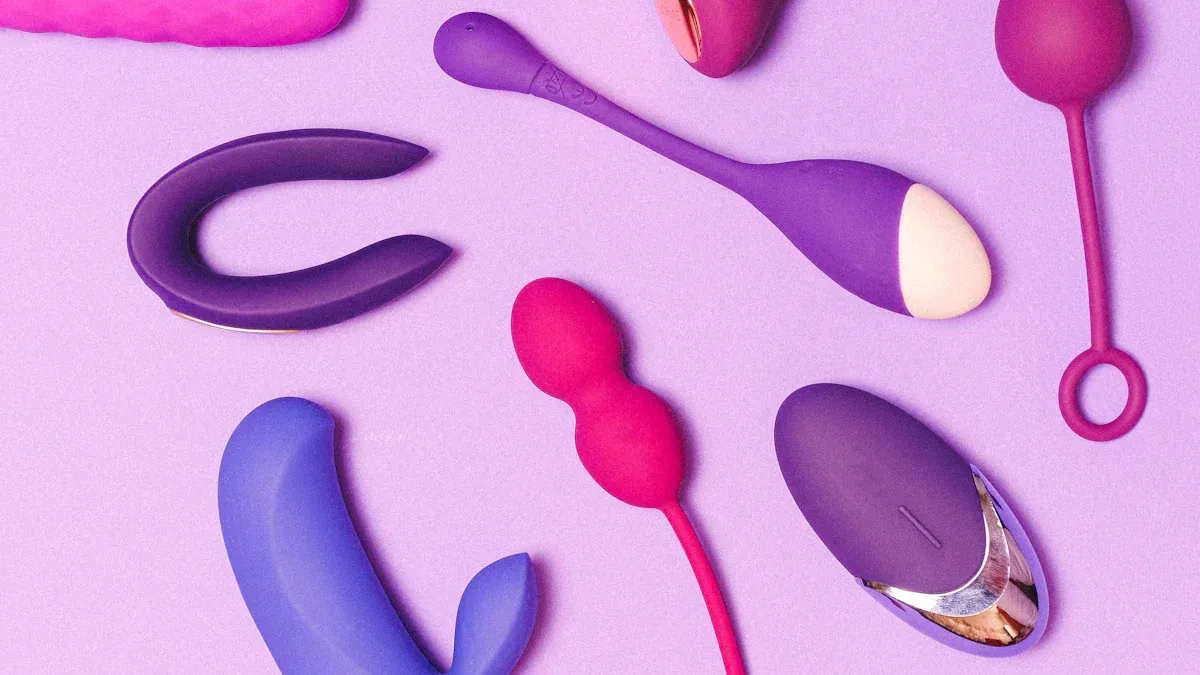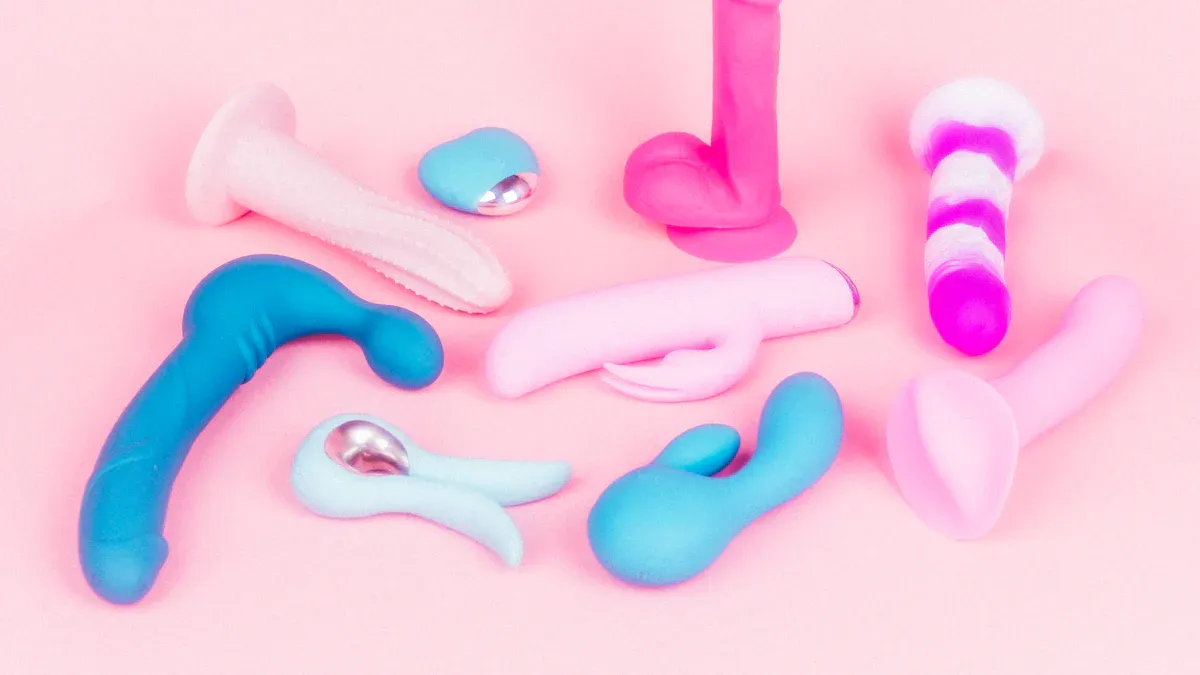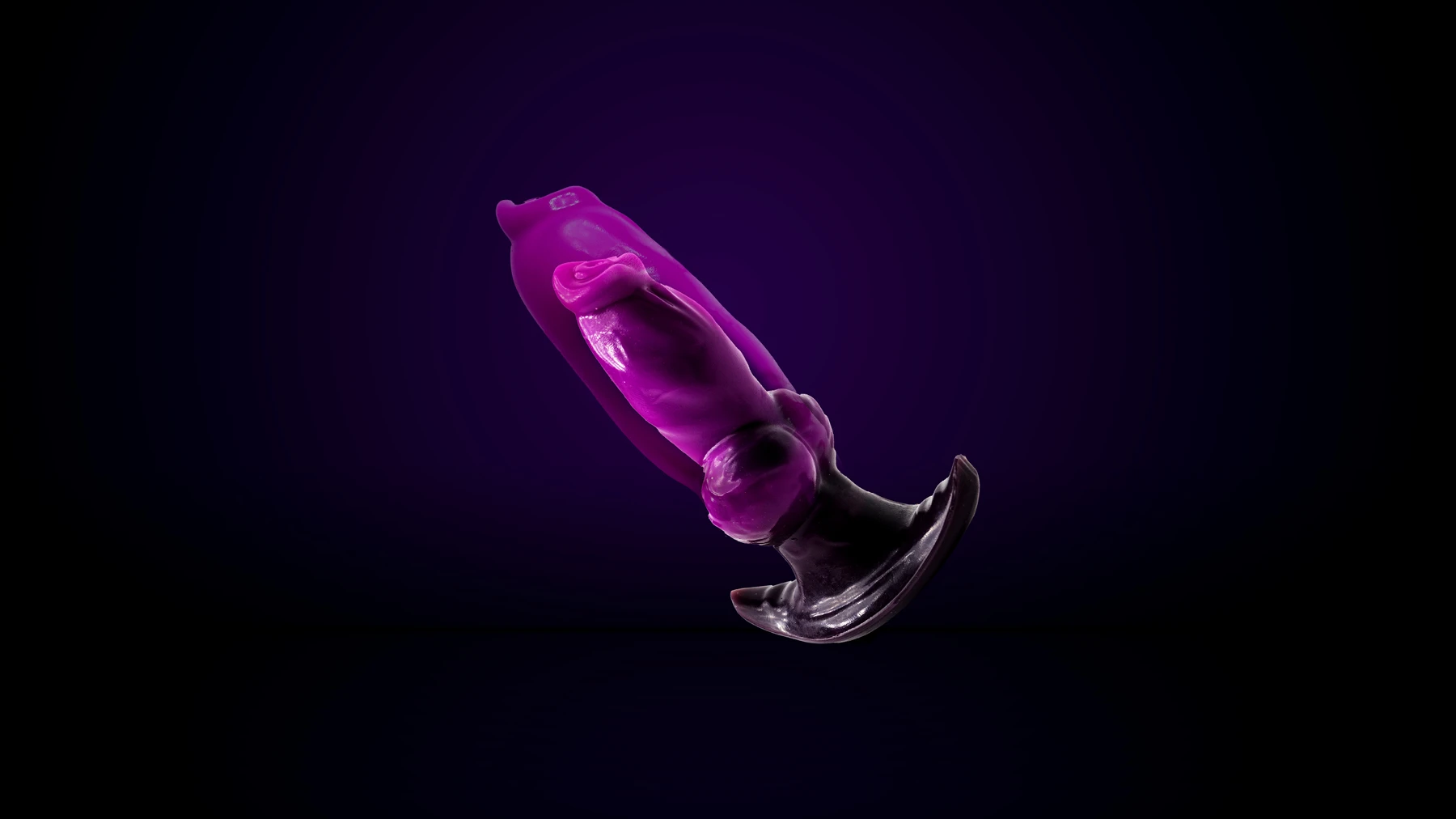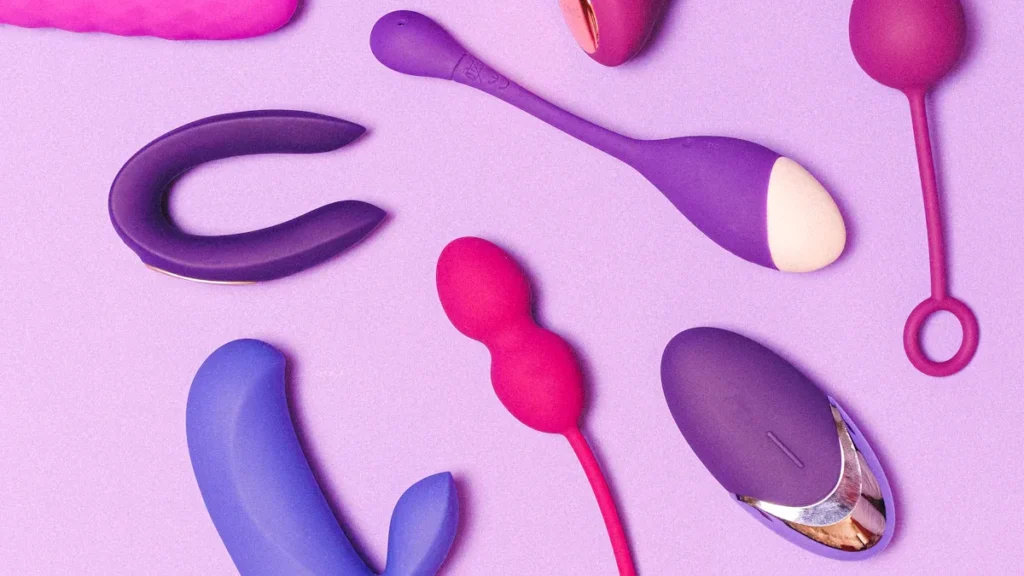Jelly Dildos Explained and How They Stack Up Against Other Sex Toy Materials

You may see that jelly dildos feel soft and bendy. They are softer than other dildos. Makers use jelly rubber to make jelly dildos. Jelly rubber is a mix of PVC and rubber. This jelly rubber can have up to 70% phthalates. Phthalates are plasticizers. These can leak out and cause smells or tastes. Jelly rubber is not like silicone or glass. It stays porous, so cleaning is hard. You should know about these differences. Some jelly sex toys can be risky for your health. This is because of chemicals and germs. Many people now pick safer toys like silicone. This is true for Strap on Dildos, Triple Dildos, or Butt Plug Dildos.
Material Type | Phthalate Content | Cytotoxicity | Restricted Chemicals |
|---|---|---|---|
Jelly (PVC) | Up to 70% | Under 30% viability | DEHP > 0.1%, banned paraffins |
Silicone | None reported | Less cytotoxic | None high |
What Are Jelly Dildos?

Jelly Rubber Composition
Jelly dildos feel soft and squishy to touch. This is because they are made from jelly rubber. Makers mix PVC and rubber to make jelly rubber. They add plasticizers like phthalates to make it bendy. This mix gives jelly dildos their special feel.
Jelly rubber is much softer than many other dildos. But being soft has some problems. Studies show jelly rubber often has a lot of phthalates. These chemicals make the toy soft, but they can leak out. Phthalates are not allowed in toys for kids. They can cause health problems. Sex toys do not always have safety rules, so jelly dildos can still have phthalates.
Jelly rubber is porous, which means it has tiny holes. Germs and viruses can hide in these holes. Cleaning does not always get rid of them. Studies warn that jelly dildos can keep germs inside. Some even found jelly rubber can hold viruses like HPV after washing. Experts say to use condoms with jelly dildos to lower your risk.
Tests show jelly rubber can also have lead. Lead is a harmful metal. It can cause health problems if used a lot. There are not many rules for sex toys. So jelly dildos can still have risky chemicals.
Features and Appeal
Many people like jelly dildos because they feel soft and bendy. You can squeeze and bend them. This makes them seem more real. Jelly dildos come in bright colors and fun shapes. Some even have glitter or glow in the dark. This playful look can make them less scary for new users.
Here are some reasons why people like jelly dildos:
They feel soft and squishy, which some people find comfy.
Jelly rubber can be made into many shapes, sizes, and colors.
They usually cost less than silicone or glass dildos.
You can find jelly dildos in many stores, online or in person.
But there are some downsides. Jelly rubber is porous, so germs can stay inside. Over time, jelly dildos can start to smell or break down. Chemicals like phthalates and sometimes lead can leak out. This can cause health risks. Studies show jelly dildos can release tiny plastic bits when used. This may add to your risk from harmful stuff.
Tip: Always check jelly dildos for cracks or changes in texture. Use a condom over the toy to help protect yourself from germs and chemicals.
Tests show jelly dildos are different from silicone, glass, or metal dildos. Silicone dildos do not have phthalates and are not porous. This makes them safer and easier to clean. Jelly rubber can break down faster and may leave behind microplastics.
Jelly dildos look fun and feel soft. But you should think about the health risks. Knowing what is in jelly rubber helps you make safer choices.
Safety and Hygiene
Porosity and Cleaning
When picking dildos, cleaning is very important. Jelly dildos are made from PVC and rubber. These materials have tiny holes inside them. Bacteria and fungi can hide in these holes. Even if you wash with soap and water, germs can stay. This makes it hard to get the toy really clean.
Porous dildos can keep germs after you wash them.
Microbes can grow inside and cause infections.
You cannot fully clean jelly dildos by boiling or using bleach like you can with medical-grade silicone toys.
Using a porous toy can raise your risk of yeast infections. Other health problems can happen too. Sticky texture and strong plastic smell mean low-quality materials. Always wash your dildos before and after use. With jelly dildos, washing may not be enough. Using a condom over the toy can help a little, but not remove all risks.
Note: The adult toy industry does not have strict rules. Many jelly dildos are made cheaply and have harmful chemicals. Always check for cracks or changes in texture before you use them.
Phthalates and Chemicals
Jelly dildos often have a lot of phthalates. Makers add these to make the toy soft and bendy. Phthalates can leak out and get into your body. Studies show phthalates can mess up hormones. They can cause problems with having babies. Sometimes they can even burn or hurt your skin. Women get more phthalates from personal care items and toys.
Phthalates can mess up hormones and cause growth problems.
Some studies found 10% of pregnant women and 4–5% of babies had unsafe phthalate levels.
Phthalates can cause problems with having babies, thyroid issues, and growth problems in kids.
Jelly rubber can also have other bad chemicals like cadmium and toluene.
Jelly rubber is porous, so chemicals can leak out more easily. This makes it more likely you will have a bad reaction. Oils in jelly rubber can also break condoms, making them not work as well. Not every use causes health problems, but using them a lot raises your risk.
Tip: Some phthalates are banned in kids’ toys. These bans show experts know these chemicals are dangerous.
Odor and Degradation
You might smell a strong chemical odor when you open a new jelly dildo. This smell comes from plasticizers and other chemicals. If the toy feels sticky or oily, it may be breaking down. Over time, jelly dildos can lose shape, melt, or get sticky. This happens because the materials break down and let out more chemicals.
Porous PVC and rubber break down faster than other materials.
As dildos break down, they can let out more harmful stuff.
A strong smell or sticky feel means poor quality and possible danger.
If your dildo smells worse or changes texture, stop using it. Broken-down toys can hurt your skin or cause burns. Medical-grade silicone, glass, or metal dildos do not have these problems. They stay safe and do not smell if you care for them.
Remember: Always keep your dildos in a cool, dry place. Check them often for damage or changes.
Different Materials for Dildos

When you shop for dildos, you will see many different materials for dildos. Each one has its own feel, safety level, and cleaning needs. Knowing these facts helps you pick body-safe materials for your health.
Silicone
Silicone dildos stand out as a top choice for safety. You can trust silicone because it is nonporous and hypoallergenic. This means germs cannot hide inside. You can clean silicone dildos with soap and water. You can even boil them or put them in the dishwasher. Silicone feels soft and flexible. It does not smell or break down like jelly dildos. You may pay more for silicone, but you get a toy that lasts longer and keeps you safer. Many doctors use silicone in medical implants because it is strong and safe for your body.
Glass
Glass dildos look smooth and shiny. They are made from special glass that does not break easily. You can clean glass dildos by boiling them or using soap and water. Glass is nonporous, so it does not hold germs. You can use glass dildos for temperature play by warming or cooling them. They cost more than jelly dildos, but they last much longer and stay safe if you care for them.
Metal
Metal dildos feel heavy and firm. They are made from stainless steel or other safe metals. You can boil metal dildos or put them in the dishwasher. Metal is nonporous and body-safe. These dildos work well for temperature play too. Metal dildos cost more, but they last for years and do not break down.
Hard Plastic
Hard plastic dildos are smooth and easy to clean. You can wash them with soap and water. Some hard plastics are nonporous, but you should check the label. They cost less than silicone or glass. Hard plastic dildos do not bend much, but they are light and simple to use.
TPE/TPR
Thermoplastic elastomer (TPE) and thermoplastic rubber (TPR) dildos feel soft and stretchy. They cost less than silicone. TPE and TPR are porous, so germs can hide inside. You need to clean them well, but you cannot boil them. These dildos may not last as long and can show wear faster. Some people have allergies to these materials.
Tip: Always check if your dildos are made from body-safe materials. Nonporous toys like silicone, glass, and metal keep you safer and last longer.
Material | Safety | Maintenance | Cost | Notes |
|---|---|---|---|---|
Silicone | Nonporous, body-safe | Easy to clean, boilable | Higher | Soft, flexible, durable |
Glass | Nonporous, body-safe | Easy to clean, boilable | Moderate-High | Smooth, good for temperature play |
Metal | Nonporous, body-safe | Easy to clean, boilable | Moderate-High | Heavy, firm, temperature play possible |
Hard Plastic | Sometimes nonporous, check label | Easy to clean | Low-Moderate | Light, firm |
Jelly Rubber | Porous, health risks | Hard to clean, not boilable | Low | Soft, can smell, breaks down |
TPE/TPR | Porous, possible allergies | Hard to clean, not boilable | Low-Moderate | Soft, stretchy, less durable |
Identifying and Choosing Safer Options
Spotting Jelly Rubber
It is smart to know what dildos are made of before buying. Jelly rubber dildos look and feel like jelly candy. They bend and wiggle more than other types. When you touch them, they can feel sticky or oily. You might notice a strong plastic smell too. These things help you tell if it is jelly rubber.
Sexual health experts say to always check the box. If the label does not say what it is made of, be careful. If it says “for novelty use only,” you should watch out. These dildos often do not follow safety rules. Jelly rubber dildos are usually cheaper than others. They come in bright colors or have glitter. You might also see them in single-use toys like cock rings or bullet vibrators.
Tip: If you cannot find clear info about the material, skip that toy. This is a good way to avoid toxic toys.
Quick signs of jelly rubber dildos:
Feels soft, squishy, and moves like jelly
Has a strong chemical or plastic smell
No clear material listed on the box
Labeled “for novelty use only”
Bright colors or glittery look
Body-Safe Alternatives
You have safer choices when you shop for dildos. Nonporous dildos do not trap germs or fluids. They are easy to clean and last longer. Medical-grade silicone dildos are a great choice. They are soft, bendy, and safe for your body. You can boil them or wash them with soap and water.
Borosilicate glass dildos are smooth and strong. They do not break easily and you can boil them to clean. Stainless steel dildos feel heavy and cool. They are easy to clean and do not hold germs. ABS plastic dildos are hard and nonporous. They do not have harmful chemicals.
Material | Why Choose It? |
|---|---|
Medical-grade Silicone | Nonporous, easy to clean, body-safe |
Borosilicate Glass | Nonporous, hypoallergenic, boilable |
Stainless Steel | Nonporous, durable, easy to sterilize |
ABS Plastic | Nonporous, free from common allergens |
When you shop, look for dildos that say “body-safe materials” or “medical-grade silicone.” Ask store workers which sex toy materials are body-safe. Always read the label and avoid toys with no clear material listed. Picking the right dildos keeps you safer and helps you have a better time.
You now know that jelly dildos feel soft and cost less, but they can trap germs and leak chemicals. Safer options like silicone, glass, or metal dildos do not have these risks.
Jelly dildos: soft, cheap, but risky
Silicone, glass, metal: safe, easy to clean, last longer
Choose body-safe materials for your health. Your safety matters most.





